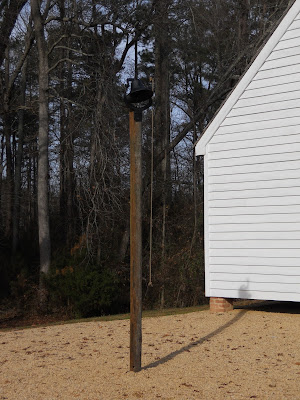When giving tours, one can paint pictures for visitors with words. Transporting guests' imaginations back 150 years ago, or even earlier, is a true art. However, occasionally, the pictures one can paint are limited to what the individual visitor brings from their own past experiences. For example, it is easier to discuss the process of planting, cultivating, and harvesting tobacco, if that guest grew up experiencing some of those aspects of agricultural work. Those people that have experienced the day-to-day work of hot, back-breaking field labor can probably better appreciate the toils of a field hand better than someone who has never even cut their own lawn. Then, adding in the fact that enslaved people received no compensation for their labor beyond the most basic of basics in the form of food, clothing, and shelter, a true understanding can begin to form.
In present-day America, one in which fewer and fewer people have agricultural roots, it can sometimes be difficult to make connections to a past that was largely experienced in a rural environment. I feel fortunate that I was able to experience farm life on a limited basis, both through visits to my grandparents farm in south-central Kentucky, as well as helping on the family farms of friends in southern Indiana. In addition, with my father being an avid hunter and angler, I feel I probably have a better understanding than the average person of the process and methods necessary for our ancestors to obtain food for themselves on a daily basis.
To help historic sites paint clearer pictures for guests from diverse backgrounds, they often seek to obtain and display items that assist visitors in making connections with the past. Those items can come in the from of large recreated structures, such as a slave quarters, a corn crib, or a tobacco barn. But they can also come in smaller formats, like the tools that enslaved individuals used, or items that masters incorporated to regulate their slaves' lives.
Getting visitors to empathize with enslaved individuals' lives at plantation historic sites is one of the largest challenges for interpreters. Due to the rights and liberties that we enjoy in the 21st century, it is difficult for guests to step back in time (especially younger guests without the benefit of age experiences) to truly understand the limitations that were enforced upon enslaved African Americans. However, by using interpretive tools, that gulf can be party bridged.
A good example is that recently we installed a plantation bell at work. This interpretive tool will hopefully help us explain that sound devices were incorporated by owners to relate clock time to their enslaved workers. Slaves were not normally allowed to own such luxuries as clocks, therefore, owners who demanded an efficient plantation operation needed the ability to translate clock time to the slaves. This was most often done through the auditory devices of a bell or horn, which sounded to let them know when to wake, when to head to the fields, when to break for meals, and when to end the day's labor. I'm sure slaves grew to hate the sound of the bell or horn. Similarly, slaves also came to associate the sound of the bell with coerced labor. In a Works Progress Administration slave narrative account that I found while researching plantation bells, a slave mentioned that his plantation's bell rang every morning at four o'clock in the morning and that it said, "get up, I'm coming to get you."
Interpretive tools such as plantation bells are significant vehicles to help facilitate learning and encourage understanding. When used in conjunction with proper explanation and reference they can make all the difference between an average learning experience and one which inspires learning beyond the tour.
Black and white bell photograph courtesy of the Library of Congress.









No comments:
Post a Comment